Tony Robinson
Scaling Recurrent Neural Network Language Models
Feb 02, 2015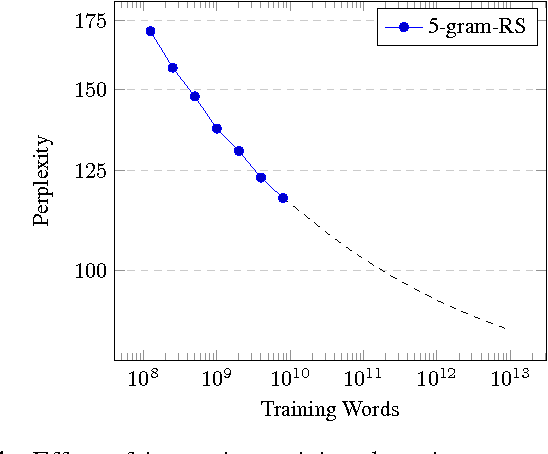
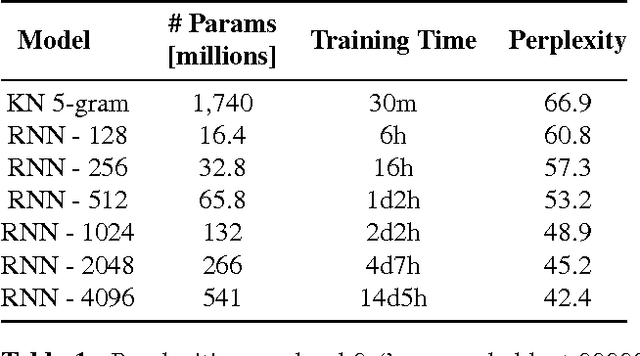
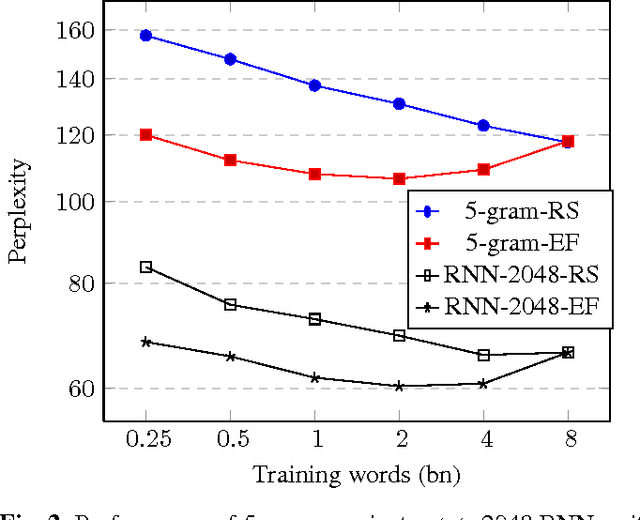
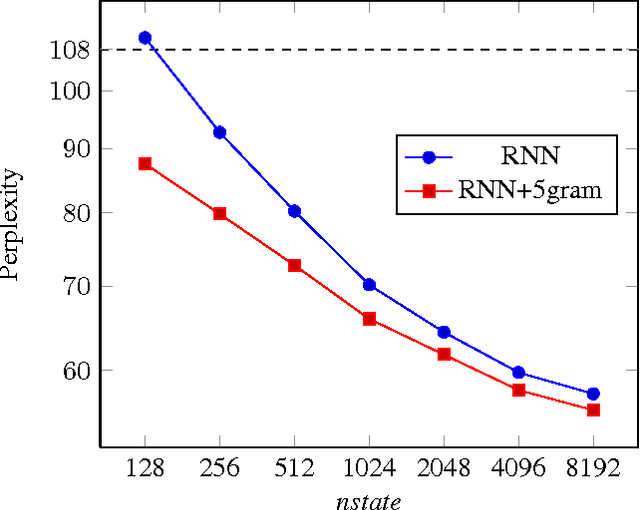
Abstract:This paper investigates the scaling properties of Recurrent Neural Network Language Models (RNNLMs). We discuss how to train very large RNNs on GPUs and address the questions of how RNNLMs scale with respect to model size, training-set size, computational costs and memory. Our analysis shows that despite being more costly to train, RNNLMs obtain much lower perplexities on standard benchmarks than n-gram models. We train the largest known RNNs and present relative word error rates gains of 18% on an ASR task. We also present the new lowest perplexities on the recently released billion word language modelling benchmark, 1 BLEU point gain on machine translation and a 17% relative hit rate gain in word prediction.
One Billion Word Benchmark for Measuring Progress in Statistical Language Modeling
Mar 04, 2014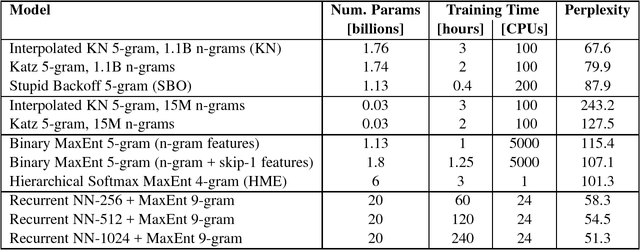

Abstract:We propose a new benchmark corpus to be used for measuring progress in statistical language modeling. With almost one billion words of training data, we hope this benchmark will be useful to quickly evaluate novel language modeling techniques, and to compare their contribution when combined with other advanced techniques. We show performance of several well-known types of language models, with the best results achieved with a recurrent neural network based language model. The baseline unpruned Kneser-Ney 5-gram model achieves perplexity 67.6; a combination of techniques leads to 35% reduction in perplexity, or 10% reduction in cross-entropy (bits), over that baseline. The benchmark is available as a code.google.com project; besides the scripts needed to rebuild the training/held-out data, it also makes available log-probability values for each word in each of ten held-out data sets, for each of the baseline n-gram models.
 Add to Chrome
Add to Chrome Add to Firefox
Add to Firefox Add to Edge
Add to Edge